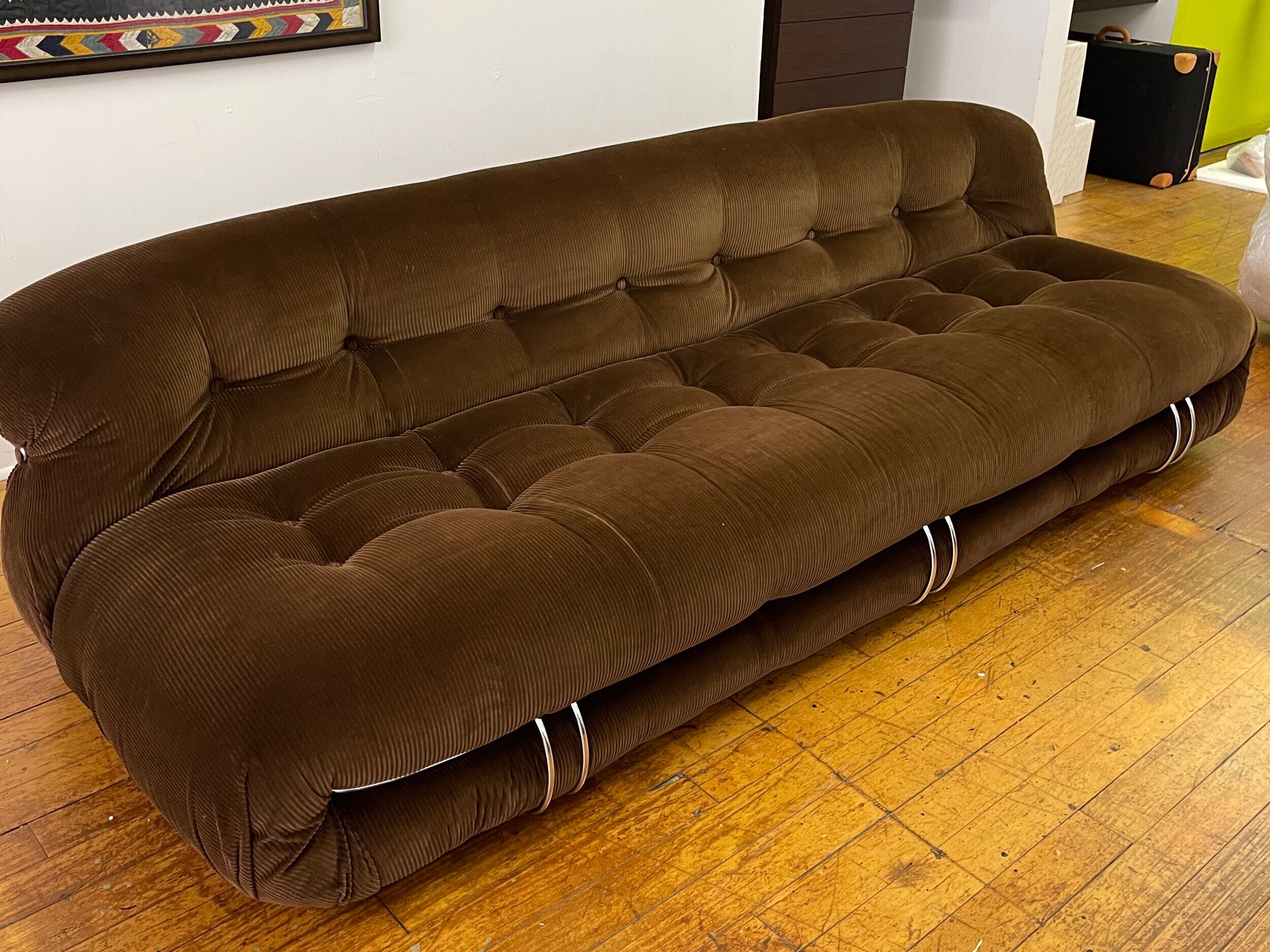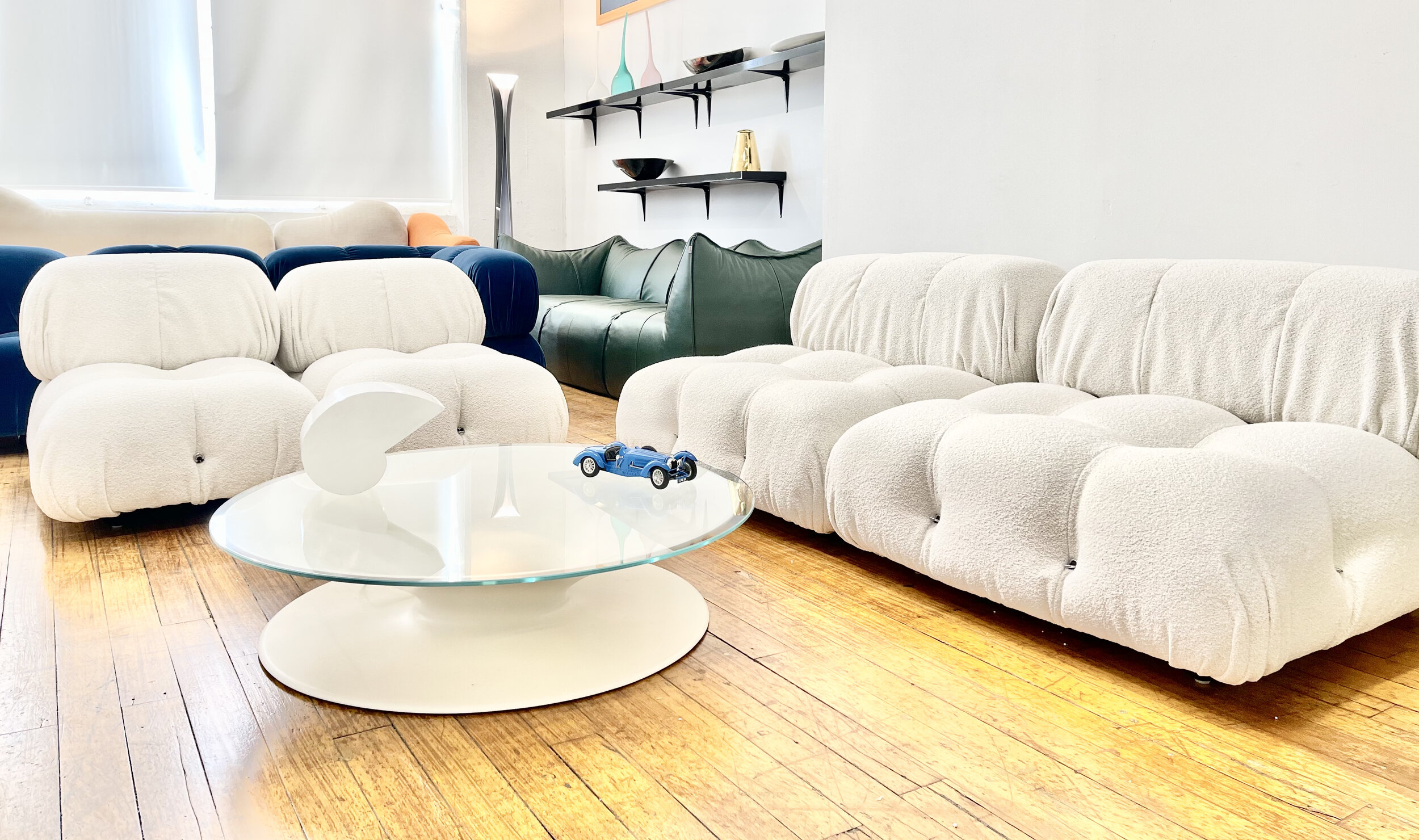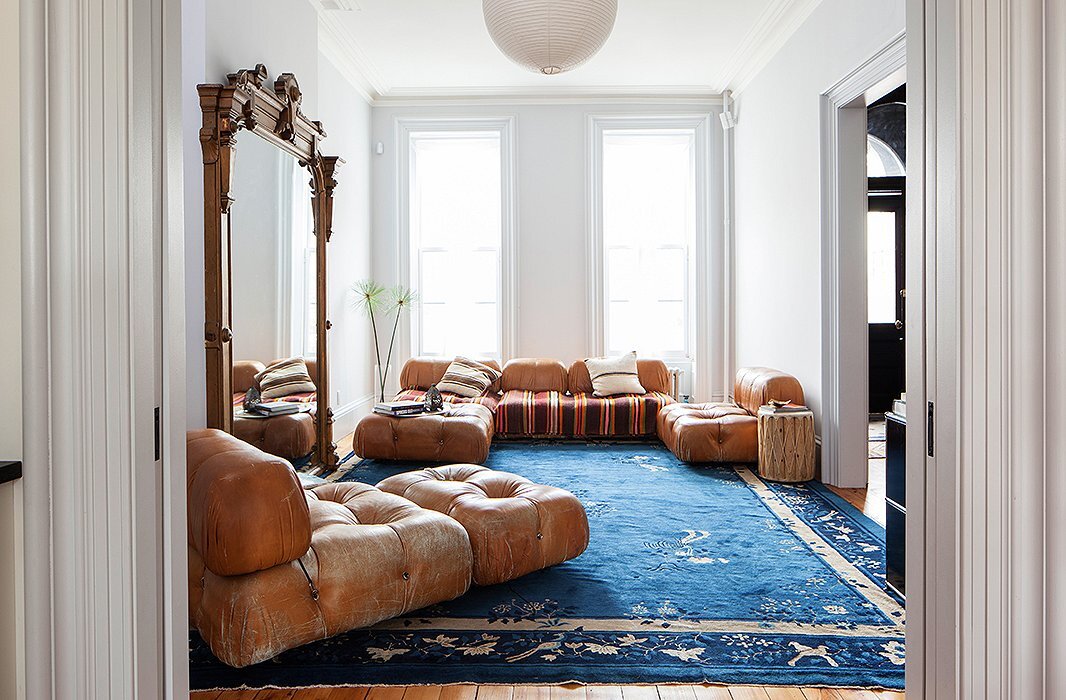We are not surprised that Italian design has reached the highest level of popularity worldwide. We all looking to embellish our homes with wonderful Italian furniture which we stare at, standing fiercely in that beautiful showroom or printed over some of the most popular magazines. It is not anymore perceived as a trend, but more likely as a movement. And Italian 20th Century Design has made a sharp and impressive comeback, with Italian Mid Century Furniture leading the market. Today, a Beautiful Carlo Mollino wardrobe-desk entitled “ Psiche Armadio “ is for sale at a famous New York Auction house starting at $ 250,000$.
Carlo Mollino "Psiche Armadio" from the Ada and Cesare Minola House, Turin, Circa 1944-46
But how far back Italian design dates? We could historically place the beginning of Italian Design somewhat immediately after a long and dark period, which saw Italy bending on its knees in the middle of the 20th Century: World Wars. It all started because of the Wars. Italy had lost almost everything, but not its citizens’ pride, citizens could not wait to start over and fuel back that fire that always had defined them, impatiently looking at a more profitable second half of the 20th Century. Italians needed to return to work, open their stores once again, lead a normal life, and hope for a brighter future.
The first sign of Design becoming an active part of society had something to do with mobility. In 1945 we were gifted with the first project of a motor scooter, the Vespa, designed by Corradino D’Ascanio, still an icon in our modern days. But the Vespa was not an isolated great project, because two years later a new exciting product was conceived, this time designed by two aeronautical engineers: the Lambretta scooter by Innocenti. Transportation and mobility also saw the creation of the beautiful and iconic Fiat 500 reflecting how Italian Design may become timeless. Not many remember another interesting project we can call a predecessor of the Smart, the captivating Isetta compact car by Ermenegildo Preti. Among other projects, we must mention the Berlinetta Cisitalia which will be then permanently exhibited at the Moma Museum of Modern Art in New York City. In 1958 Olivetti who created some of the most technologically engineered aesthetically appealing typewriters such as Letters 22 and Lexicon 80 started a collaboration with Ettore Sottsass. So we have a clear picture of how industry, engineering, and architecture were all united into creating new ideas.
Vespa Motor Scooter
This needs for a new start brought Italy years of economic wealth and the Design set its root in the field of Industrial Design with the creation of mass production of affordable and reusable every day objects, made of plastic and other low cost materials. Architects and Engineers were again involved in creating everyday objects, from cutlery to furniture for the mass.
But when does Italian Design become recognized internationally? In 1972, the Museum of Modern Art (MOMA) in New York City curated an extraordinary exhibition that would redefine the concept of domestic living. Titled "The New Domestic Landscape," this groundbreaking showcase brought together visionary designers, innovative furniture, and thought-provoking ideas that challenged traditional notions of the home. The preface of the catalog started with this sentence: It has been a long-standing assumption of the modern movement that if all man’s products were well designed, harmony and joy would emerge eternally triumphant".
Featuring the works of prominent designers and architects, such as Ettore Sottsass, Gaetano Pesce, and Joe Colombo, "The New Domestic Landscape" presented an array of avant-garde furniture pieces, innovative spatial concepts, and experimental design approaches. Visitors were exposed to unconventional seating arrangements, modular furniture systems, and imaginative solutions that prioritized flexibility, functionality, and aesthetic appeal. The exhibition inspired subsequent generations of designers and architects to think outside the box and explore the intersection of art, technology, and everyday life.






























